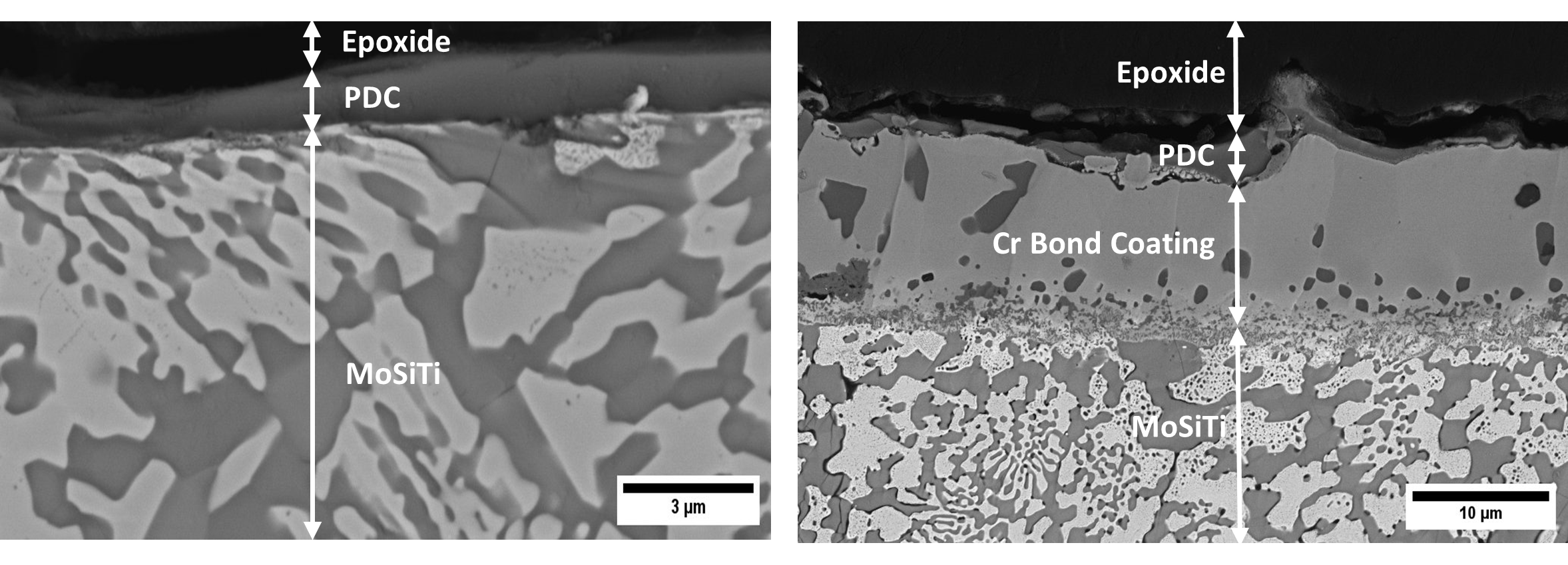Characterization of Materials Compounds from Composite Materials
Contact: Ingrit Nurak, Yolita Eggeler
The efficiency of transportation, industrial and chemical processes increases with temperature. Therefore, structural materials are required for engine parts, plant components, burners etc. which offer improved high- and ultrahigh- temperature capability [1]. The main idea of this project is to develop novel material combinations to achieve operating temperature in Internal Combustion Engines (ICEs) and Chemical Plants (CPs) substantially beyond 1300 °C. It is still the key idea to combine Polymer-Derived Ceramics (PDC) bond acting as diffusion barriers and top coating with bulk metallic/intermetallic alloys such as MoSiTi or MoSiCr.
PDC nanocomposite coatings may offer self-healing capability besides outstanding oxidation and corrosion resistance [2]. They exhibit ultra- high temperature properties in terms of melting points, phase stability and resistance against composition. In the first period, the microstructural analysis of polymer-derived ceramics nanocomposites (PDC-NCs) based on Si(M)CX with M= B, Zr, Hf and X= O, N as a bulk sample were successfully performed by XRD, SEM (EDX) and for selected regions by HRTEM including SAED and EDS.
In the second period, first sample preparation strategy has to be extended for electron transparent thin TEM samples of the metal/ceramic or multilayer/ceramic interfaces in various composite materials for high resolution imaging and local chemical analysis. Upon sample preparation, all material studied will be first imaged via SEM and conventional TEM techniques, followed by high resolution TEM to explicitly study for example interface structures or local nanocrystalline precipitates. Depending on the specific question addressed, HR-STEM imaging (with the support of a Cs corrector) will allow to image chemical variations down to the atomic column level, in order to identify segregation at interfaces or local enrichment of specific elements in close vicinity to dislocations cores at selected locations.
Figure 1 shows the cross section of two different samples, one sample with bond coating and the other sample without bond coating.

References
[1] M. Belmonte, Advanced ceramic materials for high temperature applications. Adv. Eng. Mater., 2006; 8: 693-703.
[2] J. Yuan, M. Galetz, X.G. Luan, C. Fasel, R. Riedel, E. Ionescu, High-temperature oxidation behavior of polymer-derived SiHfBCN ceramic nanocomposites, J. Eur. Ceram. Soc., 2016; 36: 3021-3028, doi:10.1016/j.jeurceramsoc.2015.12.006.
